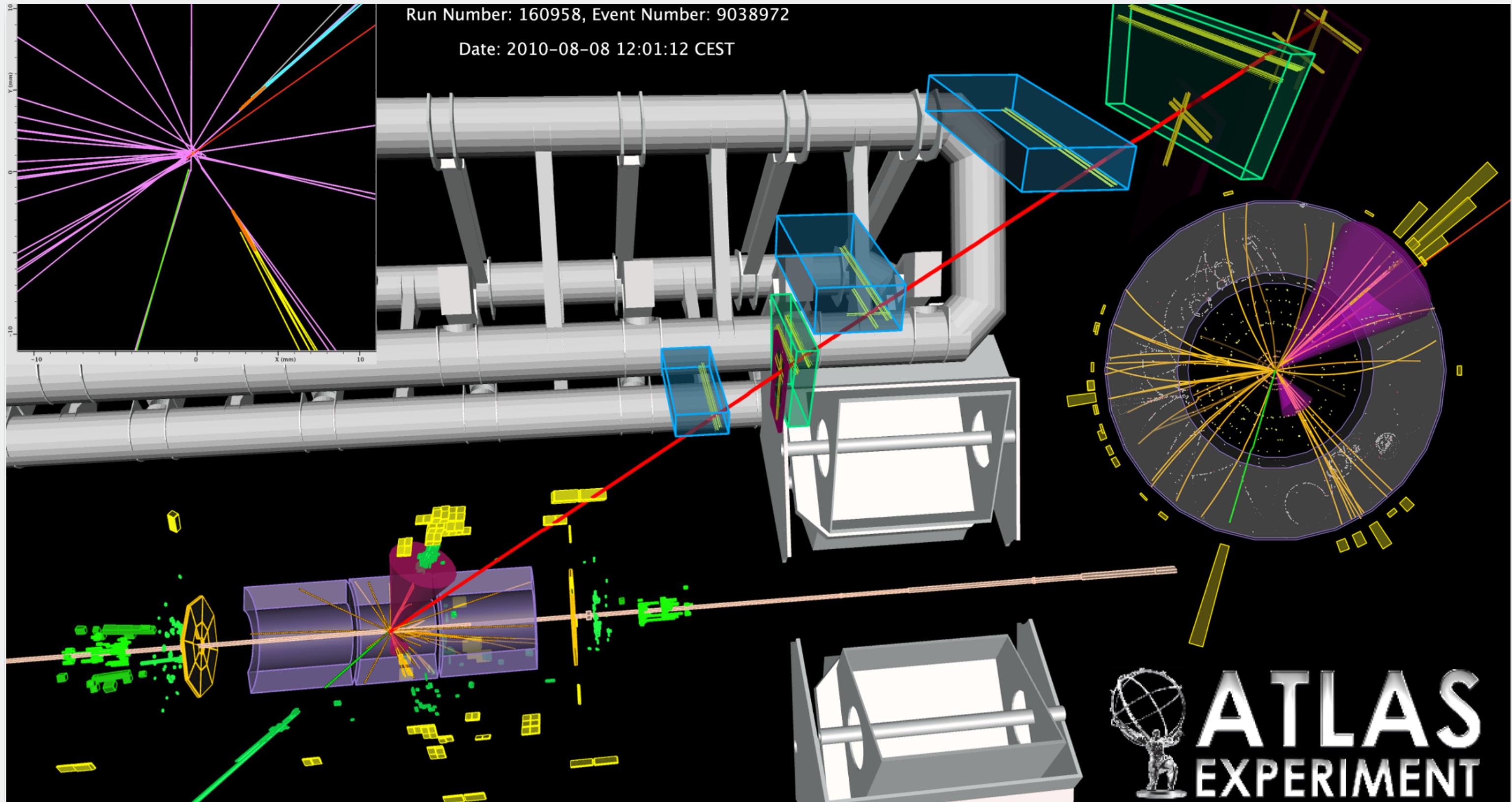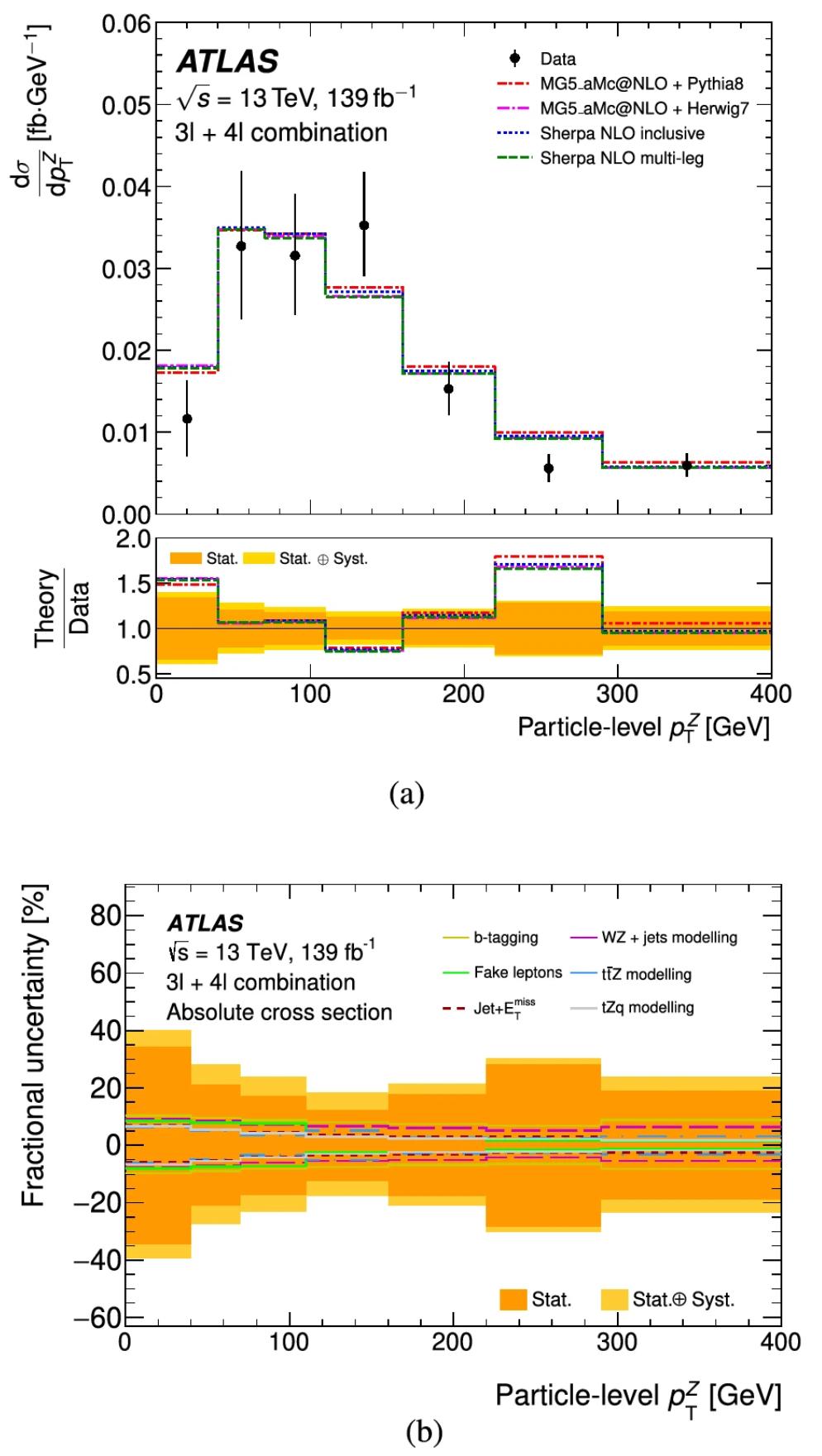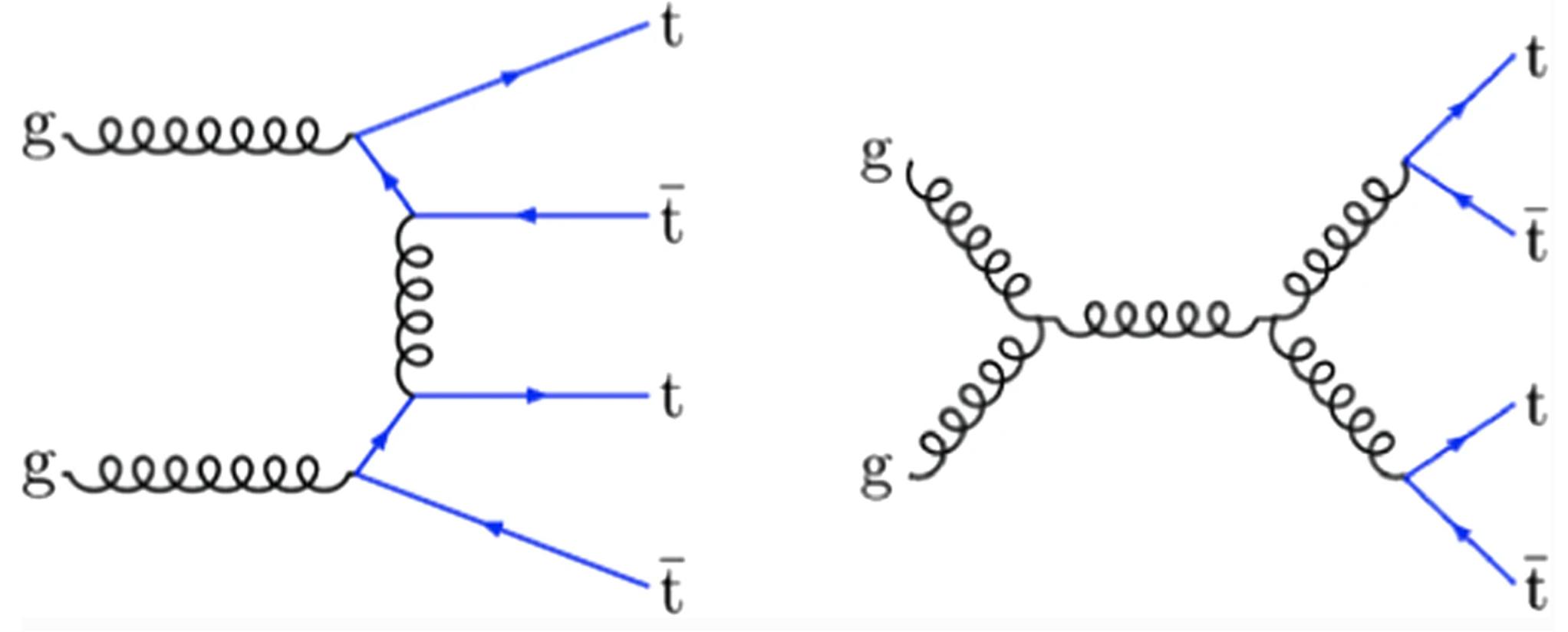
ATLAS Top-Quark Physics
The top quark is the heaviest known elementary particle, with a mass of 172.76 ± 0.30 GeV [1], and this fact, immediately suggests that such a particle may play a special role in nature. Indeed, the top quark behaves differently from all other quarks: it decays before it hadronizes (τ = 5 × 10−25 s, while τhad ∼ 10−23 s), passing the spin information on to its decay products and providing a unique environment for tests of the Standard Model (SM) as well as of Beyond Standard Model (BSM) theories. Moreover, being heavier than the W boson, the top quark is the only quark that decays into a real W boson. At last, it is the only quark whose Yukawa coupling to the Higgs boson is of order unity. Thus, for all these reasons, it is clear that an accurate knowledge of the top-quark properties (mass, couplings, production cross sections, decay branching ratios, etc.) will bring key information on fundamental interactions at the electroweak symmetry-breaking scale and beyond.
The top quark was theorized by Makoto Kobayashi and Toshihide Maskawa in 1973 and, then, discovered in 1995 by the CDF and DØ collaborations. It is characterized by I(JP) = 0(1/2+) and an electrical charge = +2/3e; it belongs to the so-called third quark generation and, thus, to the weak-isospin doublet containing also the bottom quark.
In order to produce top quarks, high-energy collisions are required. Due to the large center-of-mass energy at the LHC an unprecedented number of top-quark events is being collected. The main top-quark production processes are top-quark pair production and single-top production.


In hadronic collisions, such as the pp collisions taking place at LHC, top quarks are produced dominantly in pairs through the processes qq̄→ tt̄ and gg → tt̄, with a cross section σtt̄ ~ 831.8 pb at √s = 13 TeV, and σtt̄ ~ 984.5 pb at √s = 14 TeV.
Since 2010, the large centre-of-mass energy and luminosity of LHC enable precise and differential cross-section measurements for SM processes with small production rates, such as the associated production tt̄ + X, where X is a boson (Z boson [2], photon [3] or Higgs boson). For example, the associated production of a tt̄ pair and a Z boson (tt̄Z) is particularly interesting, as it provides direct access to the neutral coupling of the top quark to the electroweak gauge bosons. A measurement of the inclusive production cross section of tt̄Z events has been performed by targeting final states with three or four leptons. The inclusive cross section is measured to be σtt̄Z = 0.99 ± 0.05 (stat.) ± 0.08 (syst.) pb, in agreement with the most precise theoretical predictions of 0.84 ± 0.10 pb at NLO QCD and EW accuracy [2].

Due to its large mass, the top quark has a large coupling to the SM Higgs boson and is predicted to have large couplings to hypothetical new particles in many BSM models. In that respect, rare processes involving the top quark are particularly relevant to study. Among these, the production of four top quarks (tt̄tt̄) is predicted by the SM but has not been confirmed until 2020 [4], where the first evidence for this production has been found. Also, in this case, events with multiple leptons are selected. To separate the signal from the backgrounds, a multivariate discriminant is employed. The four-top-quark production cross section is measured to be 24 ± 7 fb. This corresponds to a significance with respect to the background-only hypothesis of 4.3 standard deviations.
The overwhelming majority of top-quark decays produce a bottom quark. The Standard Model also allows for exotic decays, but only at loop level, and thus they are extremely rare. In particular, it is conceivable that a top quark might decay into another up-type quark (u, c) by emitting a photon or a Z-boson. Other rare decays, predicted in BSM models, include lepton flavor violating decays (t → eμq) and neutrinoless double-beta decays through heavy neutral leptons.
[1] P.A. Zyla et al. (Particle Data Group), Prog. Theor. Exp. Phys. 2020, 083C01 (2020).
[2] ATLAS Collaboration, Measurements of the inclusive and differential production cross sections of a top-quark–antiquark pair in association with a Z boson at √s=13 TeV with the ATLAS detector. Eur. Phys. J. C 81 (2021) 737. Link
[3] ATLAS Collaboration, Measurements of inclusive and differential fiducial cross-sections of tt̄γ production in leptonic final states at √s=13 TeV in ATLAS. Eur. Phys. J. C 79 (2019) 382. Link
[4] ATLAS Collaboration, Evidence for tt̄tt̄ production in the multilepton final state in proton–proton collisions at √s=13 TeV with the ATLAS detector. Eur. Phys. J. C 80 (2020) 1085. Link





